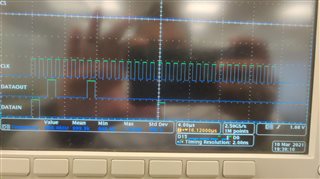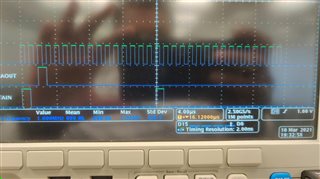I have a PIC32 connected to the ADS114S08 and I'm trying to send a RREG command and read it but all I get is garbage. I have followed ever step in setting the SPI up and checked if the CS pin is low.. everything else looks fine.. but just not being able to work the ADC or get it to respond.
Do you have any code for initializing the SPI of PIC32 and sending one basic command that works?









